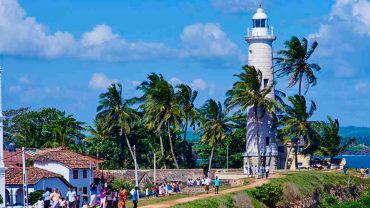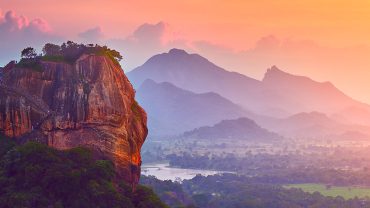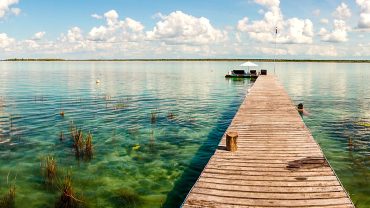Sri Lanka National Parks
Introduction
Are you a nature enthusiast, an avid bird-watcher, or simply someone who wants to escape the hustle and bustle of city life? If you answered ‘yes’ to any of these questions, then prepare to embark on an unforgettable journey through Sri Lanka’s awe-inspiring national parks. Our comprehensive Sri Lanka National Parks Travel Guide is here to help you discover the island nation’s hidden gems, a captivating collection of national parks that boast incredible biodiversity, majestic landscapes, and adventure at every turn.
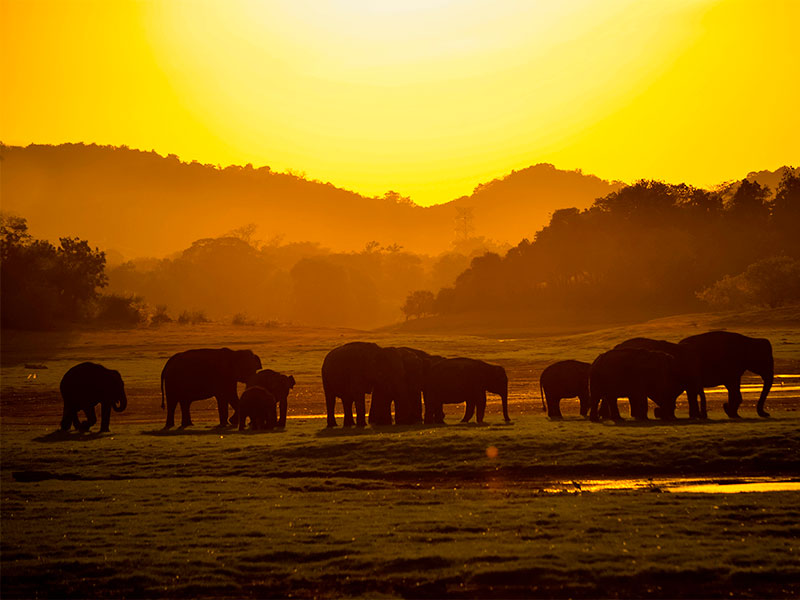
From the lush jungles of Yala National Park, teeming with exotic species like the elusive Sri Lankan leopard, to the tranquil reservoirs of Minneriya, where the world’s largest gathering of Asian elephants takes place each year, Sri Lanka’s national parks are nothing short of remarkable. They are the untamed heart of an island that is increasingly becoming a hotspot for global travelers, offering a rich medley of experiences that cater to all types of adventurers.
Why Visit Sri Lanka’s National Parks?
But why, you may ask, should you visit these national parks when there are beaches to laze upon and temples to explore? The answer is simple: Sri Lanka’s national parks offer something that you can’t find anywhere else—a unique blend of breathtaking natural beauty, diverse ecosystems, and unparalleled opportunities for wildlife observation. They serve as a sanctuary not just for native flora and fauna, but also for the human spirit, inviting you to connect with nature in its purest form.
A Diverse Array of Options
Sri Lanka is a relatively small island, but what it lacks in size, it more than makes up for in diversity. The country is home to an astounding number of national parks, each with its unique characteristics and allure. Whether you’re interested in aquatic adventures, such as snorkeling and diving in the coral reefs of Pigeon Island National Park, or you’re more inclined towards exploring the arid landscapes of Wilpattu National Park, there’s something for everyone.
Adventure Meets Conservation
The national parks in Sri Lanka are not just tourist destinations; they are also crucial conservation areas. These protected lands are home to numerous endangered species and serve as a crucial component of the island’s efforts to preserve its rich biodiversity. When you visit these parks, you’re also contributing to conservation efforts, as your entry fees often go toward maintaining and protecting these natural habitats.
What’s Ahead
In this detailed guide, we will take you through the most iconic national parks in Sri Lanka, exploring the unique features that make each one a must-visit destination. We will provide you with invaluable tips on the best times to visit, what to expect in terms of wildlife and scenery, and how to make the most out of your adventure. Whether you’re planning a short trip or an extended stay, this guide is your ultimate companion for a journey that promises to be as enriching as it is exhilarating.
So, fasten your seatbelts as we dive deep into the natural wonders of Sri Lanka’s national parks, exploring their beauty, significance, and the unforgettable experiences they offer.
The Importance of National Parks in Sri Lanka
When you think of Sri Lanka, the first images that might come to mind are likely those of its idyllic beaches, historic temples, and bustling cities. But what truly sets this island nation apart on the world stage is its incredible biodiversity, much of which is preserved and protected within its numerous national parks. While these natural sanctuaries serve as major tourist attractions, their role in conservation and in maintaining ecological balance is perhaps even more crucial.
Biodiversity Hotspots
Sri Lanka is considered one of the 35 biodiversity hotspots in the world, a title that underscores the high levels of endemism and the diversity of life forms that it supports. Many species found here are not seen anywhere else on the planet. This makes the national parks critical to the survival of numerous endangered and vulnerable species, such as the Sri Lankan leopard, the Sri Lankan elephant, and several varieties of endemic bird species.
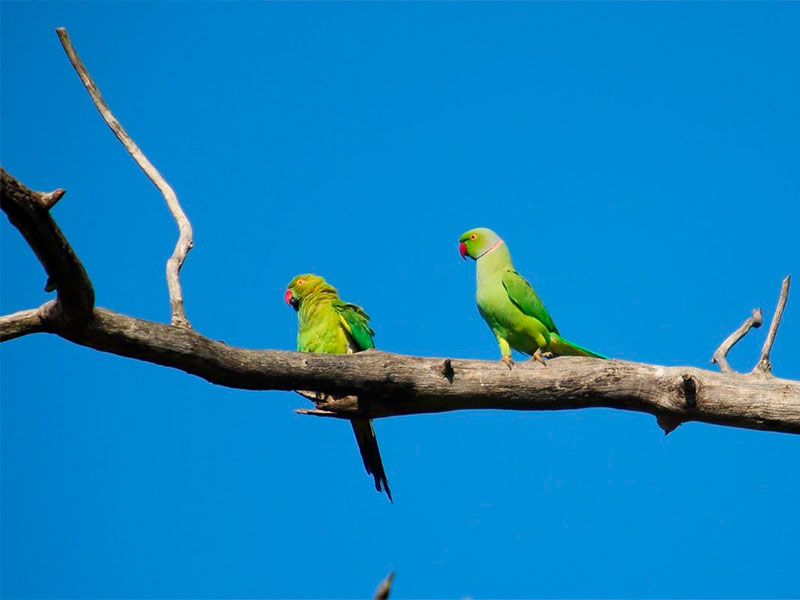
Role in Conservation
National parks in Sri Lanka are managed by the Department of Wildlife Conservation, which follows a comprehensive set of guidelines aimed at preserving the natural habitat. Measures include anti-poaching laws, strict regulation of tourist activities, and the ongoing monitoring of wildlife populations. Funds generated through tourism—your park entry fees included—are reinvested into conservation projects that benefit both the flora and fauna.
Ecosystem Services
These parks also offer a range of vital ecosystem services that go beyond conservation. They act as watersheds, supporting agriculture by stabilizing soil and regulating water flow. Forests within these parks also serve as carbon sinks, aiding in the fight against climate change by absorbing carbon dioxide from the atmosphere.
Community Involvement
Local communities often play an integral part in the conservation efforts. Many parks involve local residents in eco-tourism projects, thereby providing them with sustainable means of livelihood. This symbiotic relationship encourages locals to be active stewards of the land, further enhancing conservation efforts.
Educational and Research Importance
Beyond their role in conservation and local livelihood, national parks are also critical educational tools. They provide an open-air classroom for environmental education and are hotbeds for scientific research. Ongoing studies on animal behavior, plant species, and ecological systems contribute to the global understanding of biodiversity.
A Balancing Act
While the primary role of national parks is to protect and preserve the natural environment, they also must manage the complex task of balancing conservation efforts with human interests. Sustainable tourism, when done right, can support this balance. Guided safaris, regulated trekking paths, and controlled visitor numbers are all strategies employed to minimize human impact, thus ensuring that the parks remain unspoiled for future generations.
Conclusion
In essence, national parks are the cornerstone of Sri Lanka’s conservation efforts. They serve as living laboratories, conserving biodiversity and providing invaluable insights into complex ecosystems. At the same time, they support local communities and contribute to sustainable tourism. As you prepare to explore these natural wonders, bear in mind that your visit plays a small but significant role in the grand scheme of things, making you an active participant in the noble cause of conservation.
Top National Parks in Sri Lanka
Travelers seeking a taste of Sri Lanka’s rich biodiversity will find the country’s national parks to be awe-inspiring sanctuaries. Each park offers something a little different, from exotic wildlife to picturesque landscapes. In this part of our comprehensive Sri Lanka National Parks Travel Guide, we highlight four national parks that are unmissable.
Yala National Park
Often dubbed as the crown jewel of Sri Lanka’s national parks, Yala is famed for its density of leopards. Covering a variety of habitats including forests, grasslands, and wetlands, Yala is a wildlife enthusiast’s dream come true. Visitors can look forward to guided safaris that offer the chance to spot leopards, elephants, crocodiles, and a plethora of bird species.
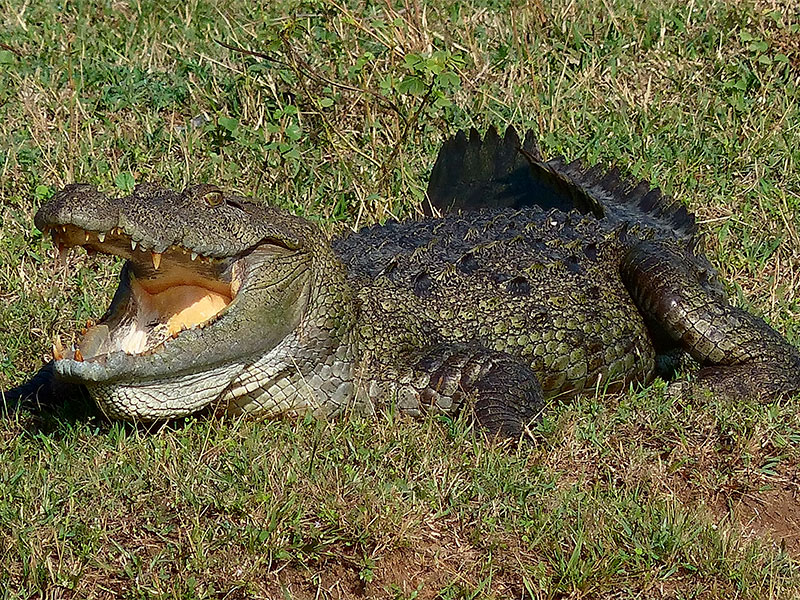
Udawalawe National Park
Udawalawe offers arguably the best opportunity in Sri Lanka to see Asian elephants in the wild. Established to protect the watershed of the Udawalawe Reservoir, the park is home to around 500 elephants. With its open spaces and large reservoir, Udawalawe provides excellent visibility for wildlife spotting, making it ideal for photography.
Minneriya National Park
Best known for “The Gathering,” a season where hundreds of elephants congregate near the Minneriya reservoir, this park is a haven for those looking to observe these majestic creatures in their natural habitat. Aside from elephants, the park also offers bird-watching opportunities with over 160 species of birds recorded.
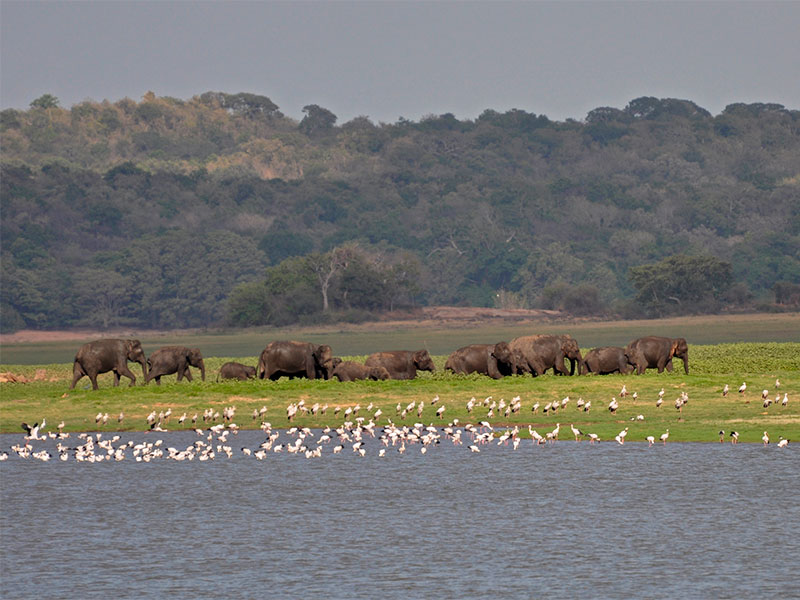
Wilpattu National Park
Wilpattu is Sri Lanka’s largest national park, and its unique feature is a complex of ‘Willus’ or natural lakes. It offers a more secluded safari experience compared to other parks. The dense forest and deep undergrowth mean wildlife is harder to spot, but the patient visitor may be rewarded with sightings of leopards, sloth bears, and spotted deer.
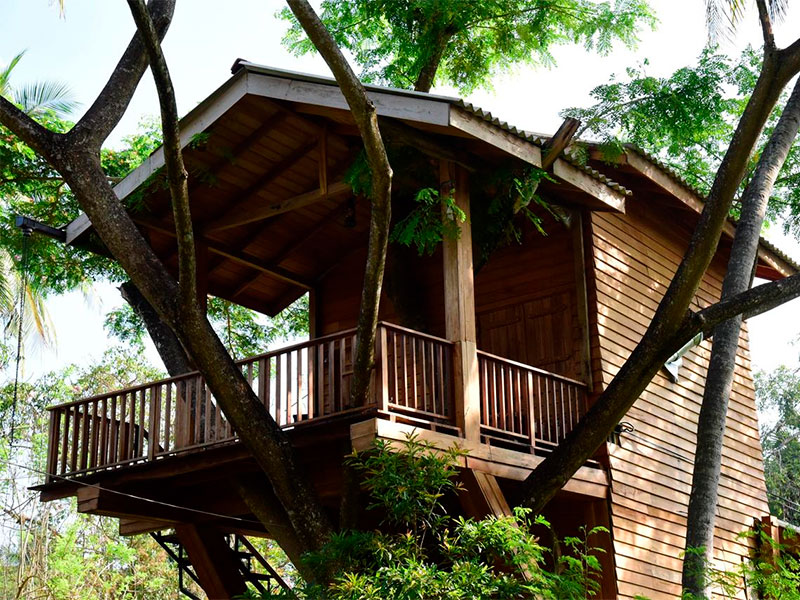
Planning Your Visit
When selecting which parks to visit, consider the time of year and what you most want to see. Yala is often closed for a short period during the dry season for maintenance and to give the animals some respite, so be sure to check the dates in advance. Udawalawe is excellent year-round but is particularly lively during the dry season when animals congregate around watering holes. Minneriya’s ‘The Gathering’ usually takes place between July and October, while Wilpattu offers a quieter experience and is best visited during the dry season from February to October.
Conclusion
Each of these parks offers a unique opportunity to immerate yourself in Sri Lanka’s natural splendor, and visiting at least one should be on the itinerary of any eco-conscious traveler. Whether you’re looking for the thrill of a leopard sighting or the calm serenity of bird-watching, Sri Lanka’s national parks offer an unparalleled glimpse into the island’s soul.
Unique Flora and Fauna in Sri Lanka’s National Parks
Sri Lanka, an island of immense natural beauty, is a biodiversity hotspot with a number of national parks harboring unique flora and fauna. The island’s isolation and the range of habitats offered by these protected areas have led to a high rate of endemism among its animal and plant species. This segment of our Sri Lanka National Parks Travel Guide dives deep into the endemic species you can encounter in the country’s national parks.
Sri Lankan Leopard
Perhaps one of the most celebrated of Sri Lanka’s endemic species is the Sri Lankan leopard (Panthera pardus kotiya). Yala National Park is often cited as having one of the highest leopard densities in the world, making it one of the best places to catch a glimpse of this elusive and majestic animal.
Asian Elephants
While not endemic, the Sri Lankan elephant is a subspecies of the Asian elephant and plays a vital role in the island’s ecosystems. Udawalawe National Park is renowned for its herds of elephants, offering travelers an almost guaranteed chance to witness these magnificent creatures. Minneriya National Park is another destination where elephants steal the spotlight, especially during “The Gathering,” an annual event where hundreds of elephants congregate.
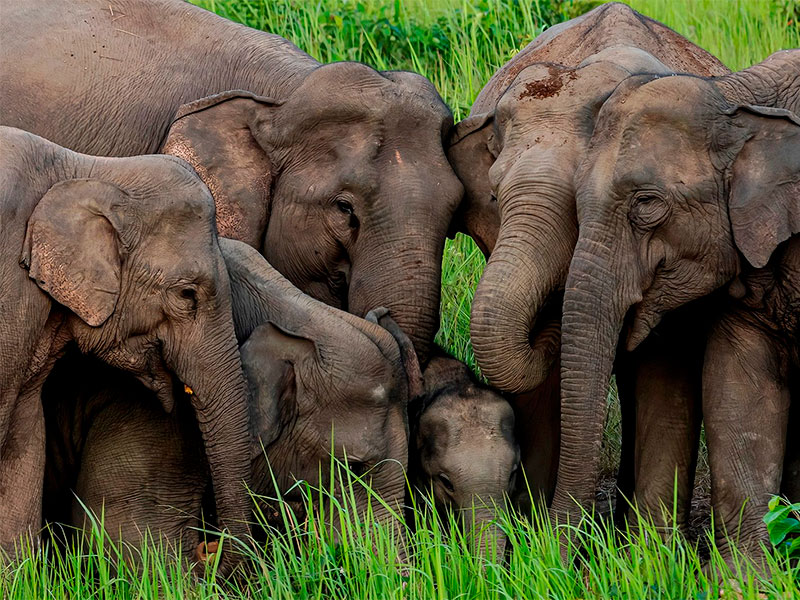
Exotic Birds
For avian enthusiasts, Sri Lanka’s national parks are nothing short of a paradise. Endemic species such as the Sri Lanka Junglefowl, the national bird of Sri Lanka, can be spotted in these parks. Minneriya is particularly good for bird-watching, with over 160 species recorded, including endemics like the Sri Lanka Grey Hornbill and the Sri Lanka Hanging Parrot.
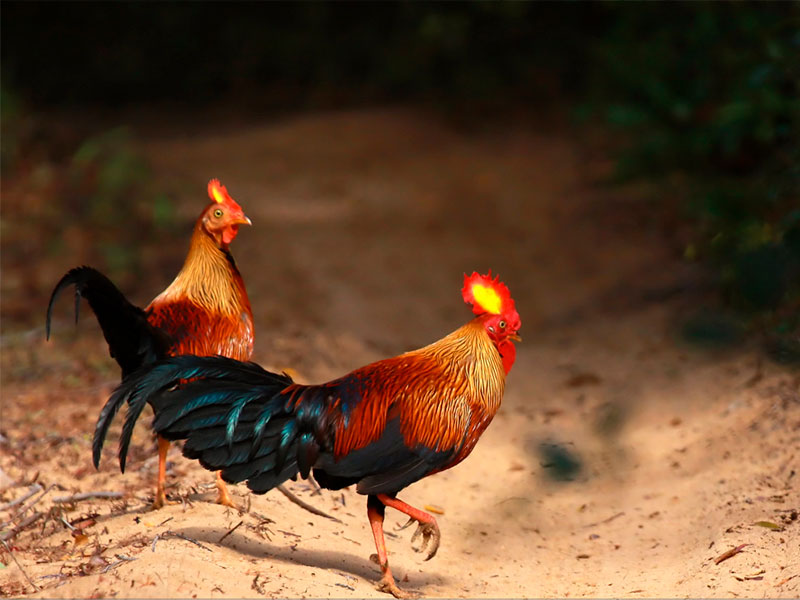
Unique Plant Species
The parks also host a wide range of plant species, some of which are endemic to Sri Lanka. The dry zone parks like Yala feature thorny scrub jungles and expanses of grasslands, while the wet zone parks such as Sinharaja Rainforest teem with lush tropical forests. The mangroves in Wilpattu National Park are another highlight, providing a unique ecosystem that supports both flora and fauna.
Other Noteworthy Creatures
The parks are also home to other fascinating creatures such as the sloth bear, spotted deer, and various species of monkeys like the Purple-faced Langur, an endemic primate. The parks’ wetlands and water bodies also attract a range of reptiles including crocodiles and a variety of freshwater fish.
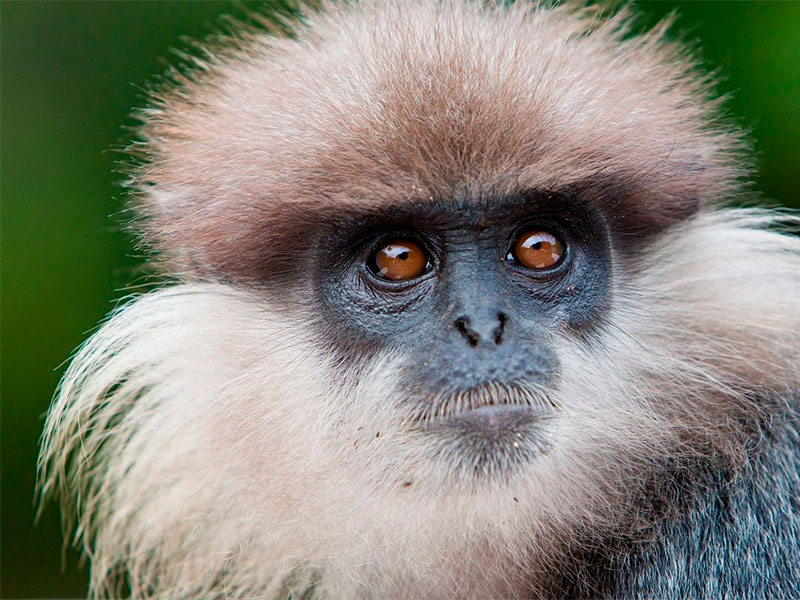
Conclusion
Sri Lanka’s national parks are a treasure trove of unique flora and fauna, offering travelers an unparalleled opportunity to get up close and personal with species they won’t find anywhere else. Whether you’re an avid wildlife photographer, a bird-watching enthusiast, or simply someone who appreciates the natural world, the biodiversity of Sri Lanka’s national parks adds an enriching layer to your travel experience.
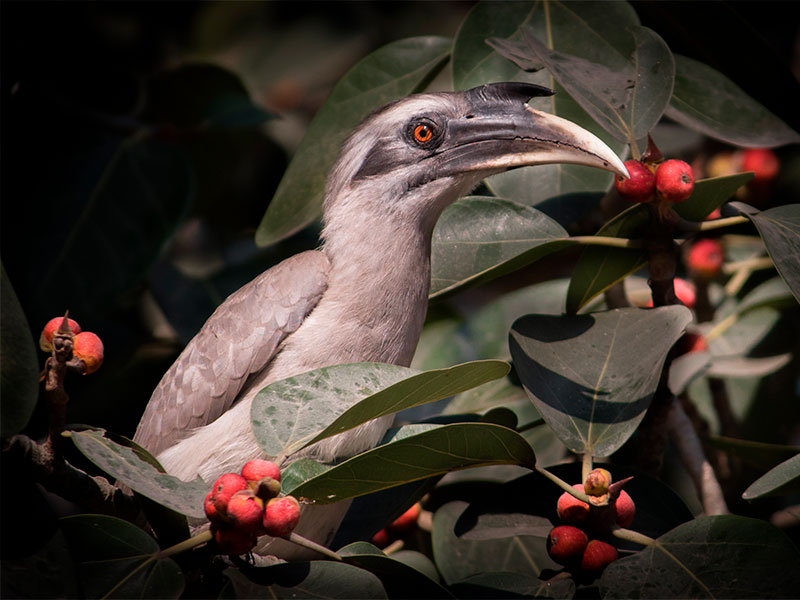
Activities and Experiences in Sri Lanka’s National Parks
Sri Lanka’s national parks offer a plethora of activities and experiences that go beyond mere sightseeing. Whether you’re an adventure seeker or a nature lover, these parks provide an exciting array of options to immerse yourself in the natural wonders of the island. In this segment of our Sri Lanka National Parks Guide, let’s delve into the popular activities you can engage in.
Safari Adventures
A safari is arguably the most sought-after activity in Sri Lanka’s national parks. Whether it’s Yala National Park, renowned for its high density of leopards, or Udawalawe National Park, famous for its herds of elephants, the safari experience here is second to none. Safaris are usually conducted in sturdy 4×4 vehicles, and experienced guides will take you through the terrains where you can spot diverse wildlife in their natural habitat.
Bird-Watching
Bird-watching is a rewarding experience, especially in parks like Minneriya and Sinharaja Forest Reserve, which are home to a large number of endemic and migratory bird species. Equipped with binoculars and a good field guide, you can spend hours identifying various exotic birds, from the colorful Sri Lanka Junglefowl to the elusive Sri Lanka Frogmouth.
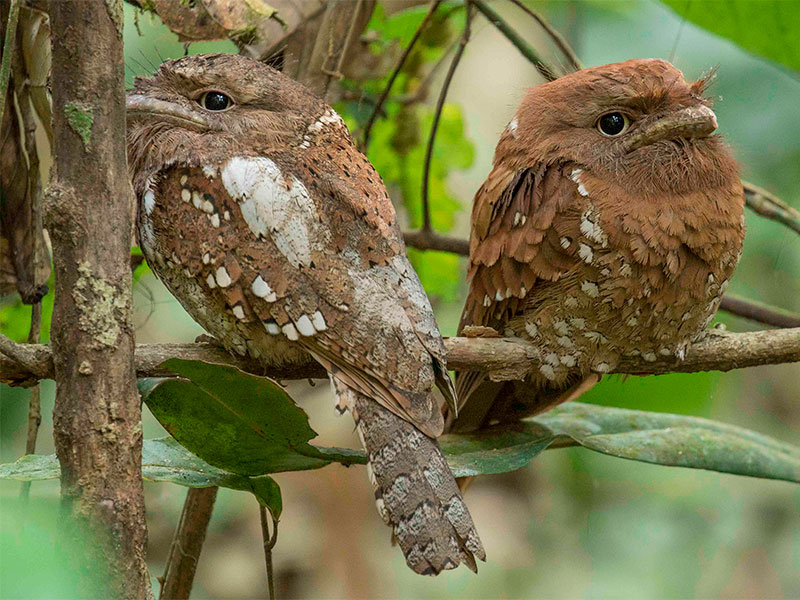
Hiking Trails
For those who like to stretch their legs, Sri Lanka’s national parks offer various hiking trails that lead you through diverse landscapes. Horton Plains National Park is well-known for its cloud forests and the famous “World’s End,” a sheer cliff with a drop of about 4,000 feet. The hike is relatively easy and offers stunning views, making it a must-visit for hiking enthusiasts.
Nature Walks
If a leisurely stroll is more your speed, you’ll find plenty of shorter nature walks in parks like Wilpattu. These walks are often led by naturalists who can offer insightful information about the local flora and fauna you encounter along the way. It’s a great way to appreciate the smaller aspects of the ecosystem that might be missed on a faster-paced safari.
Night Safaris
A few parks offer the unique experience of night safaris, where you can observe the nocturnal habits of wildlife like owls, civets, and perhaps even a leopard on the prowl. This activity is subject to availability and park regulations, so it’s best to inquire in advance.
Boat Rides
Some national parks such as Kaudulla feature large lakes and offer boat safaris. It’s an excellent way to see aquatic birds, crocodiles, and sometimes even swimming elephants.
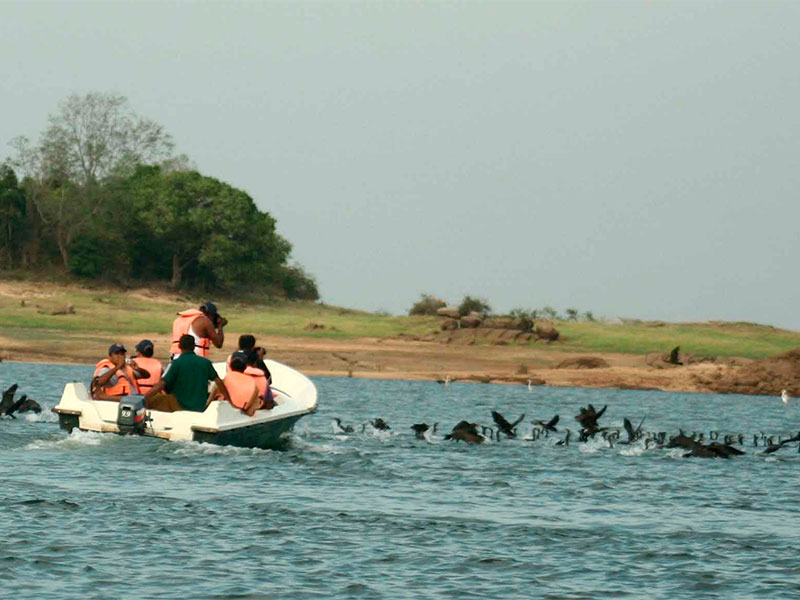
Conclusion
From adrenaline-pumping safaris to tranquil nature walks, Sri Lanka’s national parks offer a range of activities that cater to all kinds of travelers. These activities not only allow you to witness the country’s unique biodiversity but also offer unforgettable experiences that will undoubtedly be the highlight of your trip.
Best Time to Visit Sri Lanka’s National Parks
Planning a visit to Sri Lanka’s spectacular national parks requires some consideration regarding the timing of your trip. The island nation experiences a tropical climate, with distinct wet and dry seasons that affect wildlife visibility and accessibility of the parks. In this part of our Sri Lanka National Parks Travel Guide, let’s explore when it’s best to visit these natural havens.
Dry Season (May to September)
The dry season, stretching from May to September, is generally considered the best time to visit most of the national parks in Sri Lanka. This is especially true for Yala and Udawalawe National Parks, where lower vegetation and scarce water sources make it easier to spot animals like leopards and elephants as they gather around waterholes. The arid conditions during these months provide excellent opportunities for photography as well.
Wet Season (October to April)
While the wet season might not be ideal for spotting larger mammals, it offers other unique experiences. The landscapes are lush and vibrant, and it is an excellent time for bird-watching as many migratory birds visit Sri Lanka during these months. Parks like Sinharaja Forest Reserve and Horton Plains are best visited during this time for their lush scenery and birdlife.
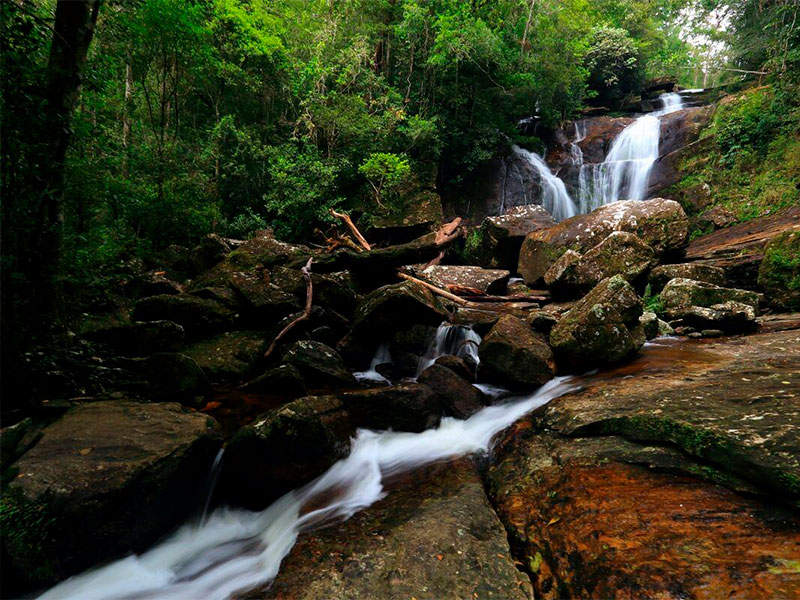
Special Events and Festivals
Certain parks like Minneriya are famous for specific seasonal events, such as “The Gathering,” which occurs between June and September. During this period, hundreds of elephants gather around the Minneriya tank, creating a spectacle that is considered the largest known meeting of Asian elephants in the world.
Off-Peak Months
If you prefer a less crowded experience, consider visiting during the transitional months between the wet and dry seasons. During this time, you can still enjoy good wildlife spotting but without the crowds that characterize peak months. However, it’s essential to check the accessibility of individual parks as some might be closed for maintenance or due to poor conditions.
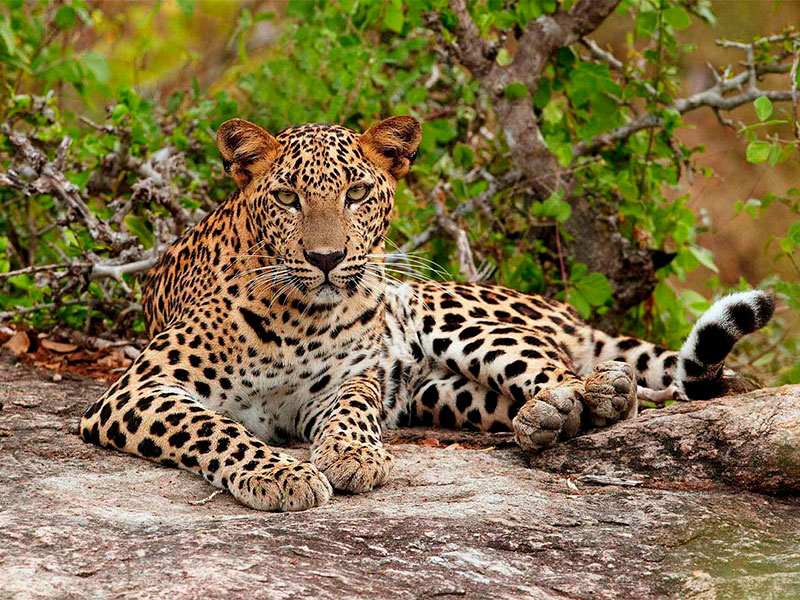
Weather Conditions by Park
- Yala National Park: Best visited from February to June when the water levels are low.
- Udawalawe National Park: Accessible year-round, but best between May and September.
- Minneriya National Park: Ideal from June to September, especially for “The Gathering.”
- Wilpattu National Park: Best between February and October, closed during the monsoon season.
Conclusion
The optimal time for visiting Sri Lanka’s national parks largely depends on what you wish to see and experience. Whether it’s the dry season’s superior game viewing opportunities or the wet season’s lush landscapes and abundant birdlife, each period offers something unique. So, choose the time that aligns with your interests and prepare for an awe-inspiring journey through Sri Lanka’s natural wonders.
Park Regulations and Guidelines: Ensuring a Safe and Responsible Visit to Sri Lanka’s National Parks
While Sri Lanka’s national parks promise a rich tapestry of biodiversity and mesmerizing landscapes, it’s crucial for tourists to observe the regulations and guidelines put in place. These rules are designed not only to protect visitors but also to conserve the fragile ecosystems that make these parks so special. Here, in our Sri Lanka National Parks Travel Guide, we delve into some key guidelines that every responsible traveler should be aware of.
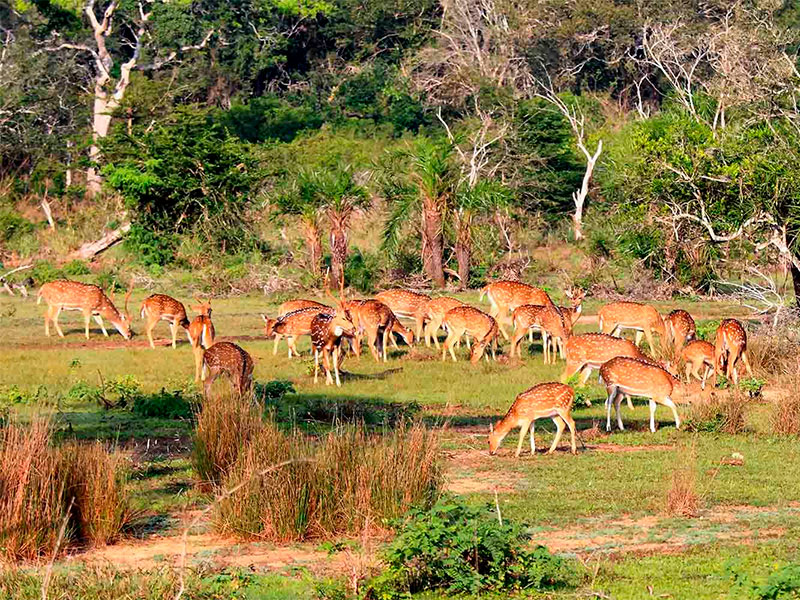
General Rules
- Do Not Feed the Animals: Feeding wildlife disrupts their natural feeding habits and can make them dependent on humans.
- Stay on Designated Paths: Straying off the established trails can endanger both you and the park’s ecosystem.
- Quiet Please: Keep noise levels down to avoid disturbing the animals and other visitors.
Photography and Filming
- No Flash Photography: The use of flash can distress and disorient animals, potentially causing them harm.
- Drones Require Permission: If you wish to use drones for filming, prior approval from park authorities is mandatory.
Waste Management
- Leave No Trace: Carry out all your litter. Most parks have designated disposal areas.
- Biodegradable Products: If possible, opt for biodegradable soaps and other products during your visit.
Conduct During Safaris
- Stay Inside the Vehicle: Do not attempt to leave the vehicle during safari tours, unless told it’s safe to do so by your guide.
- Avoid Bright Colors: Wear muted colors to blend in with the surroundings and not draw attention.
Special Areas
- Cultural and Religious Sites: If the park includes any cultural or religious sites, behave respectfully and follow any specific guidelines or rules concerning these areas.
Flora and Fauna
- No Picking or Poaching: Do not pick plants or attempt to collect specimens unless you have been granted special permission by park authorities.
Health and Safety
- First Aid: Always carry a basic first aid kit for emergencies.
- Check Vaccination Requirements: Some parks might require you to present proof of vaccination, so check ahead.
Fire Safety
- No Open Fires: Open fires are usually prohibited to prevent forest fires.
Conclusion
A visit to Sri Lanka’s national parks is a deeply enriching experience, but it comes with a responsibility to protect these natural wonders for future generations. By adhering to these guidelines, you contribute to the conservation efforts that keep Sri Lanka’s biodiversity thriving while ensuring a safe and fulfilling adventure for yourself.
Accommodation Options: From Luxe Safari Camps to Budget-Friendly Stays
As part of our comprehensive Sri Lanka National Parks Travel Guide, we recognize that the choice of accommodation can significantly influence your national park experience. Thankfully, Sri Lanka offers a broad spectrum of lodging options to suit every taste and budget, letting you immerse yourself in nature without sacrificing comfort. Here’s what you can expect.
Luxury Safari Camps
For those seeking the ultimate wildlife experience fused with lavish comforts, luxury safari camps are the way to go. These camps, often located within or near the parks, offer guided safaris, gourmet meals, and high-end amenities. Picture yourself under the stars, surrounded by the wild, yet with all the luxurious trimmings you could wish for.
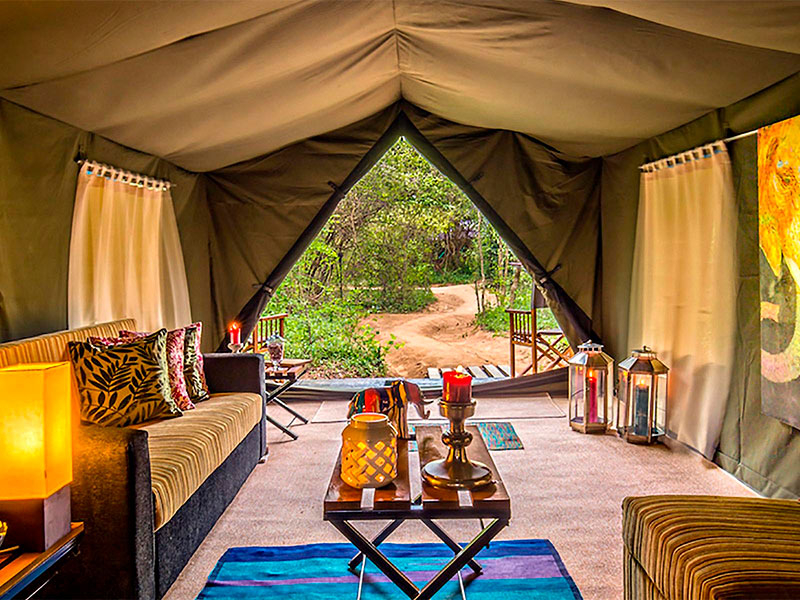
Recommended Luxury Camps:
- Leopard Trails in Yala National Park
- Mahoora Tented Safari Camp in Wilpattu National Park
Ecolodges
Ecolodges provide an eco-friendly, yet comfortable lodging experience, focusing on sustainability and local community engagement. These lodges often utilize renewable energy, waste recycling, and sustainable building materials.
Popular Ecolodges:
- Gal Oya Lodge in Gal Oya National Park
- Wild Grass Nature Resort near Udawalawe National Park
Mid-Range Hotels and Guesthouses
If you’re looking for something less extravagant but still comfortable, mid-range hotels and guesthouses offer a balanced mix of amenities and affordability. These accommodations typically feature air-conditioned rooms, WiFi, and often include breakfast.
Recommended Options:
- Elephant Trail Hotel near Udawalawe National Park
- Minneriya Safari Resort near Minneriya National Park
Budget-Friendly Options
For the budget-conscious traveler, Sri Lanka offers an array of affordable hostels, motels, and guesthouses, often located in the towns and villages close to the national parks. These establishments offer basic amenities like fans, shared bathrooms, and sometimes communal kitchens for self-catering.
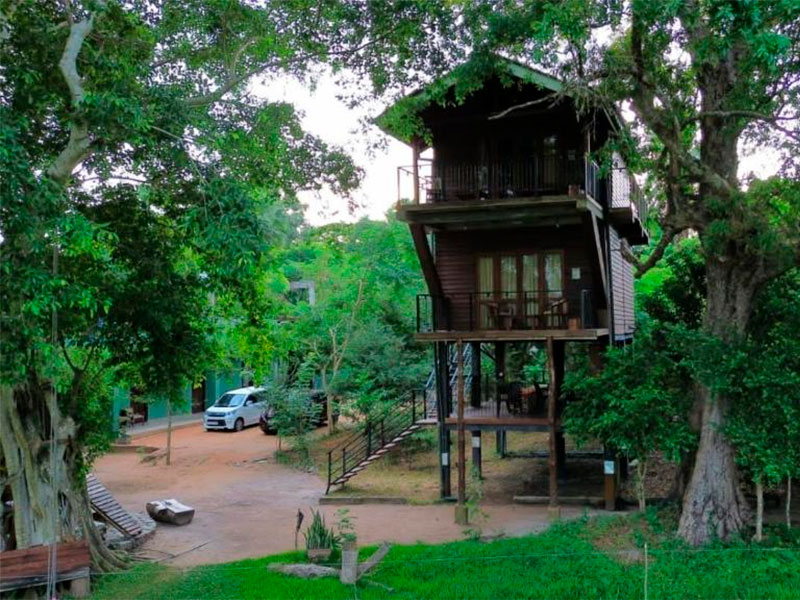
Budget Picks:
- My Village Hotel near Yala National Park
- Wilpattu Tree House near Wilpattu National Park
Camping
For the most adventurous souls, camping is a thrilling way to connect deeply with nature. While some parks offer designated camping spots with basic facilities, it’s crucial to check park regulations regarding independent camping.
Best for Camping:
- Horton Plains National Park
- Knuckles Range
Conclusion
Whether you’re looking to splurge on a high-end safari retreat or save with budget-friendly lodging, Sri Lanka’s national parks offer a variety of options to meet your needs. Each offers its unique blend of proximity to nature, amenities, and cultural experiences, ensuring that your trip will be as comfortable as it is memorable. Choose wisely and enjoy the natural splendors that await you!
Getting There: Navigate Your Way to Sri Lanka’s National Parks
Continuing with our in-depth Sri Lanka National Parks Travel Guide, an essential factor for any traveler is understanding how to get to these remarkable national parks. Whether you’re someone who loves the freedom of independent travel or prefers the convenience of guided tours, Sri Lanka offers various options to suit your style.
Public Transport
Sri Lanka’s public transport network, consisting mainly of buses and trains, provides an economical way to reach some national parks. While this option can be time-consuming and might not drop you directly at the park entrance, it offers a local experience worth having.
- Yala National Park: The closest town is Tissamaharama, accessible by bus from Colombo. From there, tuk-tuks or local cabs can take you to the park entrance.
- Udawalawe National Park: You can take a bus to Embilipitiya from various cities and then hire a taxi to reach the park.
- Minneriya National Park: The town of Habarana is the closest and is well-connected by bus and train. Taxis or tuk-tuks complete the final leg to the park.
Private Transport
Renting a car is an option if you’re looking for more freedom and comfort, but remember that Sri Lankan roads can be challenging to navigate if you’re not familiar with local driving customs. Most rental services offer the option of a driver, highly recommended for stress-free travel.
Guided Tours
For hassle-free planning and the added benefit of local knowledge, guided tours are an excellent option. These tours often include transportation, park entrance fees, and sometimes even meals. They range from day trips to multiple-day adventures.
- Multiple Park Tours: Some operators offer packages that take you to several parks, providing a broader experience of Sri Lanka’s diverse ecosystems.
- Safari Tours: These are specifically designed for wildlife enthusiasts and usually include expert guides who can spot animals and explain their behaviors.
Air Travel
For the ultimate in speed and convenience, some parks are accessible via domestic flights, although this is generally the most expensive option.
- Sigiriya Airport: Near Minneriya and Kaudulla National Parks, a quick domestic flight can take you close, followed by a short taxi ride.
Boat Travel
For parks with significant water bodies, like Gal Oya National Park, boat services are an adventurous and scenic way to arrive.
Conclusion
Your choice of transportation can significantly influence your national park experience in Sri Lanka. Each option presents its blend of adventure, comfort, and cultural immersion. So whether you choose the local bus, a private car, or a comprehensive guided tour, your journey to these natural paradises is bound to be an experience in itself. Plan wisely and enjoy the ride!
Packing Tips: Be Prepared for Your Sri Lanka National Parks Adventure
In this continuation of our comprehensive Sri Lanka National Parks Travel Guide, we’re giving you the inside scoop on what to pack for your national park adventure. Whether you’re planning a day trip or an extended stay, being well-prepared enhances your experience and helps you get the most out of your visit. So, what should you bring?
Essential Items for Day Trips
- Clothing: Opt for light, breathable fabrics, ideally in earthy tones to blend in with the natural surroundings. Consider a hat and sunglasses for sun protection.
- Footwear: Sturdy, comfortable hiking boots or walking shoes are essential. Make sure they’re broken in before your trip to avoid blisters.
- Hydration: Always carry enough water, especially when going on safaris or hikes. Reusable bottles are a sustainable choice.
- Snacks: Lightweight, non-perishable snacks like granola bars or fruit can be lifesavers during lengthy excursions.
- Camera & Binoculars: For wildlife spotting and capturing those unforgettable moments.
- Sunscreen & Bug Spray: Protect yourself from the sun and keep those pesky insects at bay.
- Small First-Aid Kit: Include basics like antiseptics, band-aids, and any personal medication.
Additional Items for Overnight Trips
- Tent & Sleeping Bag: If you’re camping, make sure your tent is easy to assemble and your sleeping bag suited for the season.
- Flashlight & Extra Batteries: For navigating your way at night and in emergency situations.
- Cooking Supplies: A portable stove, utensils, and non-perishable food items if your accommodation doesn’t provide meals.
- Personal Toiletries: Go for biodegradable soap and toothpaste to minimize your environmental impact.
- Maps & Compass: While your phone’s GPS can be handy, traditional navigation tools are reliable backups.
Special Consideration Items
- Rain Gear: Weather can be unpredictable; a light raincoat can be invaluable.
- Multi-Tool: For those unexpected situations where a quick fix is needed.
- Daypack: For day excursions from your base accommodation, bring a small backpack to carry essentials.
Optional but Helpful
- Notebook & Pen: To jot down observations or thoughts; this can also serve as a quick reference guide for identifying species later.
- Portable Charger: Keep your gadgets charged, especially if you’re staying in more rustic accommodations.
Conclusion
Packing smartly for your trip to Sri Lanka’s national parks isn’t just about convenience; it’s also about being responsible and respectful towards the environment you are exploring. By preparing adequately, you’re all set for an adventure that will undoubtedly be a highlight of your trip to this beautiful island nation. Happy travels!
Sustainability and Responsible Tourism: Tread Lightly in Sri Lanka’s National Parks
As part of our extensive Sri Lanka National Parks Travel Guide series, we’re diving into one of the most crucial aspects of visiting Sri Lanka’s national parks—sustainability and responsible tourism. We all want to marvel at the majesty of wild elephants, glimpse the elusive Sri Lankan leopard, and experience the richness of exotic flora and fauna. However, it’s our collective responsibility to ensure that we leave only footprints and take only memories, minimizing our environmental impact.
Respect the Rules
Every national park in Sri Lanka has a set of guidelines, and it’s imperative to follow these to the letter. These rules aren’t just in place for your safety; they’re also designed to protect the local ecosystem.
Leave No Trace
The principle is simple but essential: pack out what you pack in. Whether it’s a piece of plastic or organic waste like fruit peels, remove it from the park. Many parks offer designated waste disposal areas.
Use Eco-friendly Products
From biodegradable soaps to reef-safe sunscreens, opting for environmentally friendly products can significantly reduce your ecological footprint. Even the snack wrappers you choose can make a difference—look for items in biodegradable or recyclable packaging.
Mindful Photography
While it’s tempting to get that perfect shot, avoid venturing off designated trails and paths. Straying into undisturbed areas can harm the local flora and may also disturb wildlife habitats.
Reduce, Reuse, Recycle
Limit the use of single-use plastics by carrying reusable water bottles and food containers. If you must use plastic, ensure you recycle it at facilities that offer this service.
Maintain a Safe Distance from Wildlife
Close encounters may make for great photos, but they can stress animals and change their natural behavior. Always maintain a safe and respectful distance.
Support Local Communities
When booking guided tours, or purchasing goods and services, prioritize local providers. This not only supports the local economy but also often results in a more authentic and educational experience.
Participate in Conservation Programs
Some parks offer conservation experiences that let you be a part of their efforts to protect the environment. Whether it’s tree planting or participating in a wildlife census, your involvement makes a difference.
Educate Others
One of the best ways to promote sustainability is to educate others. Share your responsible travel tips and experiences with friends and social media followers, inspiring them to also become conscientious travelers.
Conclusion
Being a responsible tourist in Sri Lanka’s national parks isn’t difficult, but it does require a degree of mindfulness. By following these guidelines, you contribute to the ongoing conservation efforts, ensuring that these natural wonders are preserved for generations to come. Make your journey a model of sustainable tourism and take pride in knowing you’ve made a positive impact.
Personal Recommendations: Unveiling the Hidden Gems of Sri Lanka’s National Parks
In our comprehensive Sri Lanka National Parks Travel Guide, we’ve explored everything from the vital conservation roles of the national parks to the unique flora and fauna you can witness. Now, let’s get a bit more personal. Having traversed the terrains of Yala, Udawalawe, Minneriya, and Wilpattu among others, here are some of my own insights and recommendations to enhance your Sri Lankan wildlife adventure.
Yala National Park
Yala is famous for its leopards, but don’t underestimate the thrill of watching a sloth bear amble through the undergrowth. I recommend taking a dawn safari for the best wildlife viewing and fewer crowds. The park’s Sithulpauwwa Rock Temple is also a hidden gem worth exploring.
Udawalawe National Park
The Elephant Transit Home in Udawalawe is a must-visit. It’s an ethical alternative to elephant orphanages and offers an educational experience. I was deeply moved watching these majestic animals being rehabilitated for a return to the wild.
Minneriya National Park
The “Gathering” of elephants at Minneriya is a spectacle you don’t want to miss, usually taking place between August and October. However, my personal favorite moment was spotting a herd of deer cautiously approaching a watering hole, a little slice of serenity amid the grander displays of wildlife.
Wilpattu National Park
Wilpattu is less crowded than Yala but equally rewarding. Its unique “willus” or natural lakes, provide stunning backdrops for photography. A canoe ride here was one of the most peaceful and enriching experiences I’ve had in Sri Lanka.
Hiking Trails
If you’re into hiking, don’t miss the trails in Horton Plains National Park. The “World’s End” viewpoint offers a panoramic vista that is simply breathtaking. Do start early to avoid the mist that can obscure the view later in the day.
Local Cuisine
Whenever you can, opt for local eateries around the parks. Not only do they offer an authentic culinary experience, but they also help you contribute directly to the local economy.
Choose Your Guides Wisely
A knowledgeable guide can make or break your safari experience. Opt for those who are certified and have a genuine respect for wildlife. The added insight they offer can greatly enhance your understanding of the ecosystem.
Conclusion
Visiting Sri Lanka’s national parks has been among the most rewarding experiences of my life. The beauty of the landscapes and the diversity of wildlife are unparalleled. However, what made these visits even more special were the off-the-beaten-path experiences and the wisdom shared by local guides. I wholeheartedly recommend immersing yourself not just in the sights and sounds but also in the local culture and conservation efforts. After all, responsible and enriching travel go hand in hand.
Conclusion: Sri Lanka’s National Parks—An Unmissable Odyssey Into Wilderness and Conservation
In this extensive Sri Lanka National Parks Travel Guide focusing on national parks, we have journeyed through the must-visit sanctuaries, delved into the exotic flora and fauna, and touched upon the exciting activities that await you. But why should Sri Lanka’s national parks be a non-negotiable entry on your travel bucket list?
A Conservation Haven
First and foremost, these parks are not just tourist attractions; they are vital hubs of biodiversity and conservation. They provide a sanctuary to endangered species like the Sri Lankan leopard and the sloth bear, as well as offering refuge to herds of elephants and exotic birds. Your visit contributes to the essential funding needed for conservation projects and community livelihoods surrounding these parks.
Unmatched Diversity
Nowhere else will you experience such a plethora of landscapes, ecosystems, and wildlife within a relatively compact geographical area. From the dry scrub jungles of Yala to the evergreen forests of Sinharaja, and from the elephant gatherings at Minneriya to the tranquil natural lakes of Wilpattu, the range is staggering.
Experiential Learning
It’s one thing to see wildlife on a screen and quite another to witness it in its natural habitat. The national parks of Sri Lanka offer an educational journey where you can learn about various species, their behaviors, and the ecological balance that sustains them. This is especially enhanced by the insights provided by skilled local guides.
Personal and Ethical Rewards
There’s a sense of ethical satisfaction knowing that your visit, especially if done responsibly, contributes to the well-being of these incredible ecosystems. Whether it’s choosing eco-friendly accommodation or respecting park guidelines, every small action counts.
Beyond Wildlife
Lastly, these parks are not just about animals and plants. They are deeply entwined with the local culture and history. Many parks house ancient ruins and spiritual sites, adding a unique dimension to your wildlife excursion.
Final Thoughts
Visiting Sri Lanka’s national parks offers far more than a collection of picturesque moments; it offers a rich, educational, and ethically rewarding experience that will stay with you long after you’ve returned home. From their conservation significance to their natural splendors and the wealth of activities they offer, these parks are a microcosm of what makes Sri Lanka an extraordinary destination. So, come explore, learn, and be a part of conservation in one of the most biodiverse corners of the planet. It’s an adventure you won’t regret and one you will never forget.
FAQs: Your Questions Answered on Visiting Sri Lanka’s National Parks
Before you embark on a thrilling adventure to the national parks of Sri Lanka, it’s only natural to have a few questions. In this section of our Sri Lanka National Parks Travel Guide, we’ve compiled some frequently asked questions that tourists often have. Let’s clear the air so you can focus on planning your trip with ease.
Do I need a permit to enter the national parks?
Yes, you do. Tickets can be purchased at the entrance of each park. For some parks, it’s advisable to book in advance, especially during peak tourist season.
Can I explore the park on my own?
Most parks require that you take a guided tour, usually in a safari jeep, for your safety and to better protect the wildlife. There are very few exceptions where self-guided tours are allowed.
What should I wear?
Dress in neutral colors like beige, green, or brown. Bright colors may scare off animals. Also, comfortable footwear is a must.
How can I make my visit eco-friendly?
Always carry reusable water bottles, avoid plastic, and never litter. Always follow the park guidelines and stay in eco-friendly lodges whenever possible.
Is it safe to visit these parks?
Generally, yes. However, always follow the instructions of your guide, maintain a safe distance from animals, and adhere to park regulations to ensure your safety and that of the wildlife.
What’s the best time to visit for wildlife spotting?
Each park has its optimal time for spotting particular animals, generally around their watering holes. Dry season is often better for wildlife viewing, although the scenery may be lusher during the wet season.
Are there any health precautions I should take?
It’s advisable to take preventive measures against mosquitoes, as malaria and dengue fever are present in some areas. Consult your healthcare provider for vaccines and medication.
Can I take photos?
Absolutely, but no flash photography, as it can startle the animals. Drones are generally not permitted.
Do the parks offer accommodation?
Yes, many parks have lodging options ranging from basic campsites to luxury safari lodges. It’s advisable to book in advance.
Are these parks suitable for children?
Most parks are child-friendly and offer an educational experience for youngsters interested in wildlife and nature. However, age restrictions may apply for certain activities, like advanced hikes.
By answering these questions, we hope to have clarified any doubts you may have had. Visiting Sri Lanka’s national parks is an enriching experience, offering educational and recreational opportunities for travelers of all kinds. Prepare well, respect the local ecology and regulations, and you’re set for an unforgettable adventure.

